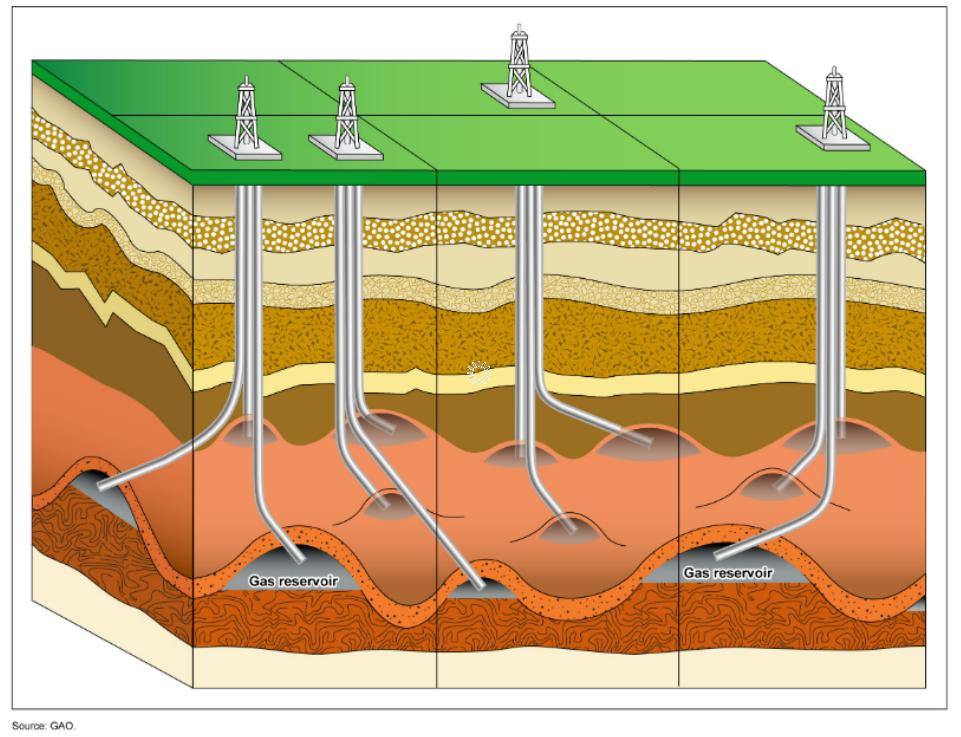Uncertainty is common throughout the oil and gas production process from unknown geological conditions, variability in equipment manufacturing and maintenance, to discrepancies between models and reality. There is always uncertainty about what’s actually under the ground and no two operating environments are exactly the same. Additionally, physical test data contains inherent uncertainties from operator error and imprecise equipment.

Oil and Gas Resverior Model
Though simulations are increasingly capable of predicting real-world scenarios, uncertainty arises from necessary approximations and assumptions which fail to include significant parameters and real-world behaviors. For equipment, variability in the manufacturing process and histories of individual components will yield unknown variations that may influence performance, product quality, and safety.
Consider analyzing the performance and safety of a piping system: Uncertainty is present from the initial design modeling all the way through wear and tear on installed systems. A multi-phase pipe flow simulation may use a specific numerical solver, turbulence model, and bubble size distribution. Each of these simulation components approximates the physical system and has associated uncertainty. A physical test of the pipe flow will have measurement errors due to inaccurate instruments and may not be representative of the conditions in the field. The pipe manufacturing process, even with quality control, results in variable geometry and strength metrics. Once in use, the pipe will suffer uncertain erosion rates due to fluid particulates, affecting flow characteristics and reducing the pipe’s strength in hard to anticipate ways.
Process safety in both upstream and downstream sectors is critical to avoiding hazardous working conditions, lost productivity, and environmental degradation. Modeling and testing the design margins of equipment under all possible conditions is often infeasible, leading to uncertain performance in the field. In the downstream sector, refineries and processing plants, which must meet Occupational Safety and Health Administration (OSHA) safety standards, are subject to variable operating conditions and human error which can lead to unanticipated and potentially dangerous working conditions. Upstream uncertainties are often physical factors such as uncertain pore pressure and geological variability. When these uncertainties aren’t considered early, such as in wellbore stability models, they can lead to unforeseen failures.
| Challenges | Current Status | SmartUQ Solutions |
|---|---|---|
| Estimating resources accurately for complex reservoirs. | Ongoing work to improve subsurface imaging techniques. | Advanced DOEs for conducting probabilistic analyses (like adaptive and augmented). |
| Combining simulation results from multiple models (fluid, fracture, geodynamics). | Increasingly efficient reservoir models. | Breakthrough predictive statistical models with higher accuracy and faster fitting times for increasingly large systems. |
| Limited noisy subsurface data. | Optimization based history matching. | Advanced UQ tools to anticipate impacts from uncertainties in geological conditions and subsurface. |
| Improving criteria for subsurface model selection. | Calibration and inverse analysis done using traditional DOEs. | Built-in DOE convergence estimates to give greater confidence in results. |
| Inefficient sampling of simulations with traditional techniques | Probabilistic analysis done using Monte Carlo DOEs and simple response surface models. | |
| Translating model uncertainties into risk for decision making |
| Challenges | Current Status | SmartUQ Solutions |
|---|---|---|
| Analytical models unable to capture full drilling behavior. | Increased use of neural network methods, regression models, and signal decomposition tools. | Novel tools that subsample and slice large data sets into a manageable size. |
| Limited opportunities to conduct drilling tests available. | Increase use of reliable and flexible downhole instrumentation. | DOEs that reduce simulation runs while maintaining required accuracy. |
| Operating enviroment is subsurface and largely unobservable. | Creating statistical models focused on drilling performance metrics. | Building predictive models for large, high dimensional, complex systems. |
| Drilling uncertainties drive production costs higher when trajectory targets are missed. | Integrating data analytics with drilling control systems to prevent costly downhole failures. | Capabilities of predictive modeling: forcasting 'models' from expected ground conditions and rig setup and production impacts from geological conditions, measurements, and drilling process parameters. |
| Challenges | Current Status | SmartUQ Solutions |
|---|---|---|
| Systems must maintain high reliability in increasingly harsh conditions. | Extensive use of deterministic CAE for equipment development. | Unique DOEs and powerful sensitivity analysis identify important parameters. |
| Minimal testing options. | Increasing usage of computing clusters for design work. | The ability to "do more with less" by using predictive (surrogate) models for computationally expensive tasks. |
| Simulation can take hours, weeks or days to generate meaningful results. | Increasingly complex analyses that try to leverage more information. | Powerful uncertainty quantification tools expose the impacts of variability on equipment performance. |
| Hard to determine actual performance due to variability. | Pursuing improvements: generating more accurate models, better understanding performance in the presence of variability, "doing more with less resources" | Quantifying uncertainties enables effective decisions making at key points in the development process. |
| Physical tests provide data for only a few specific conditions | ||
| Multidisciplinary problems often involve disconnected domains, making it difficult to find viable solutions. |